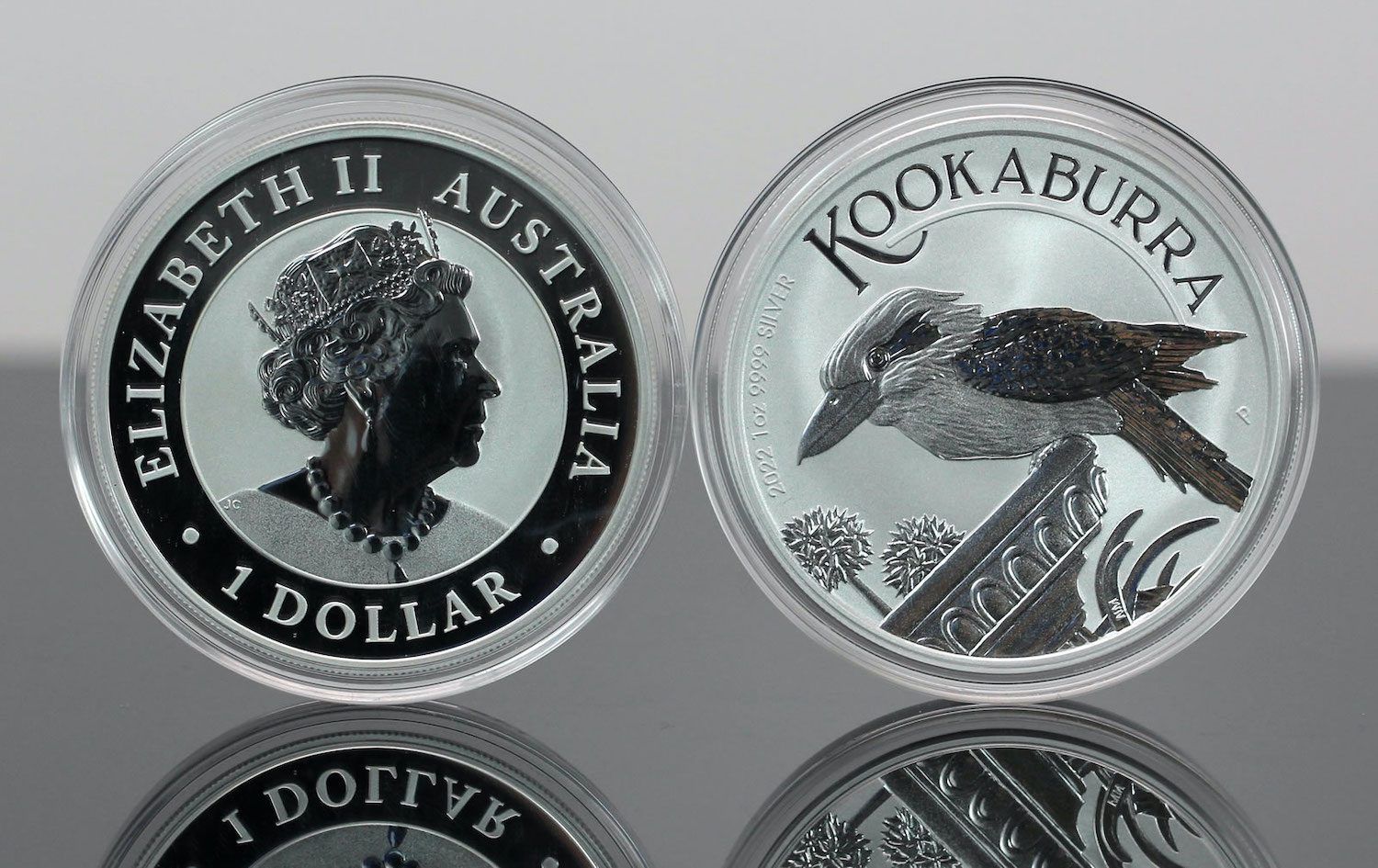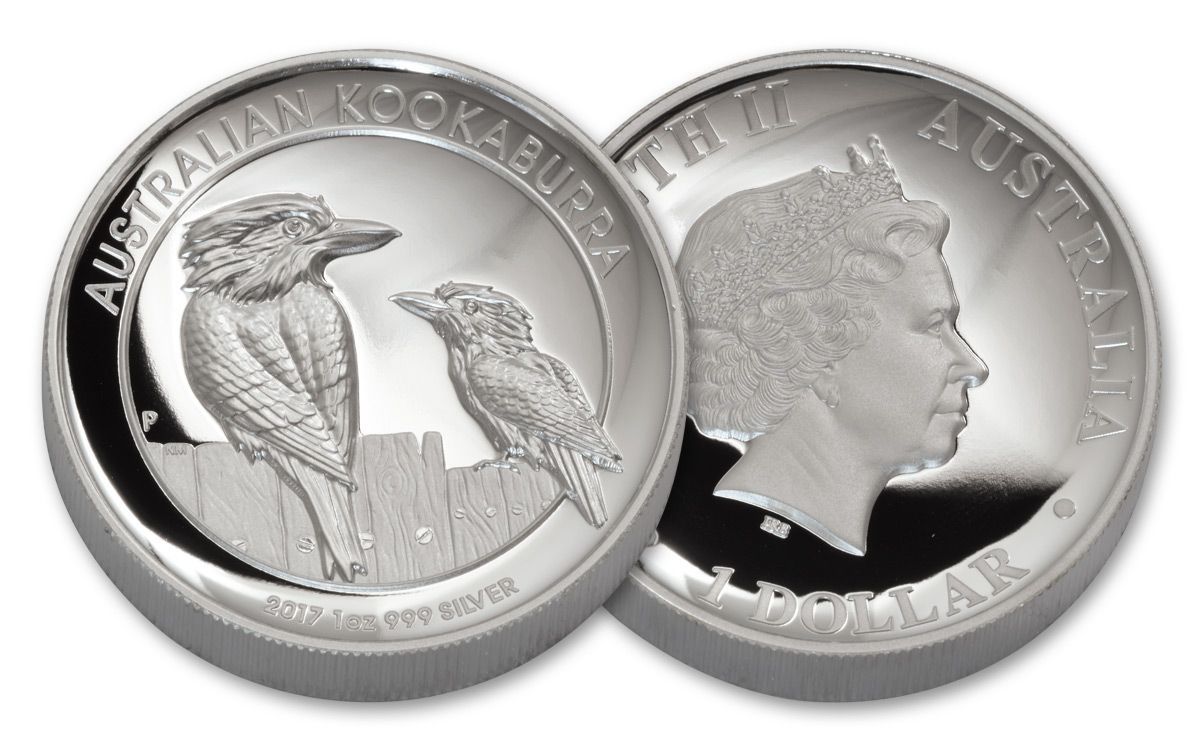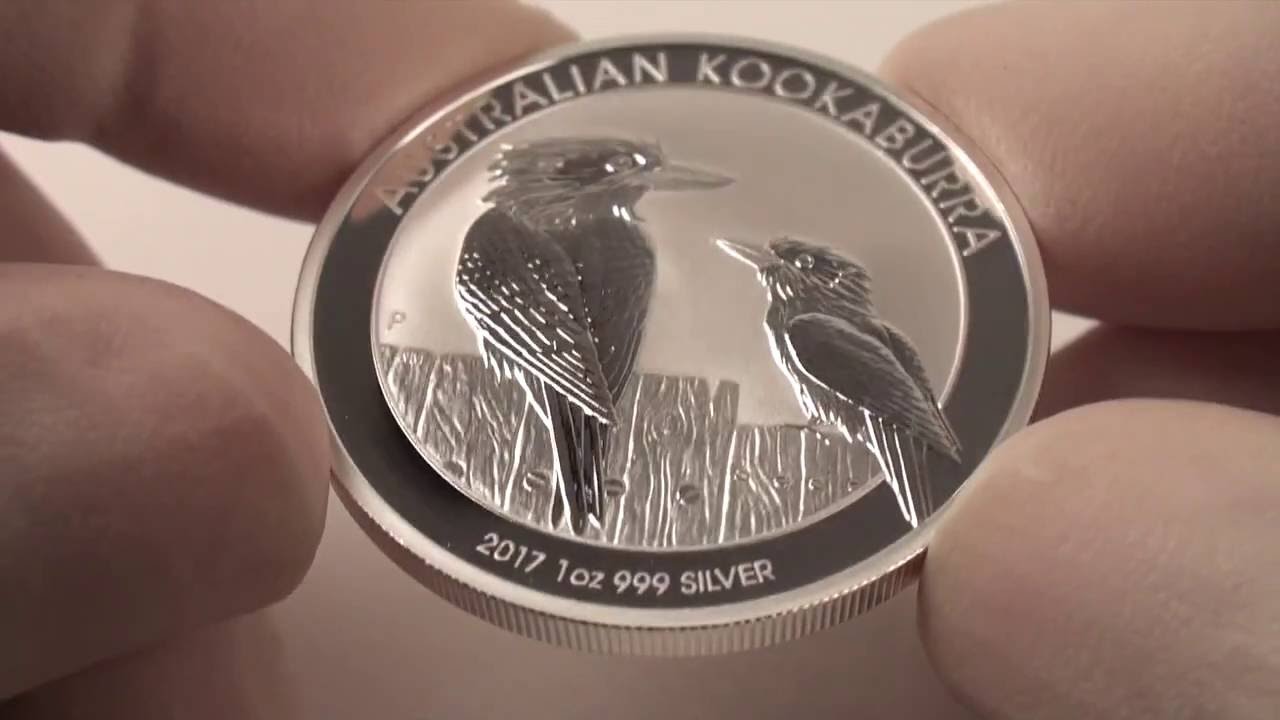
The Australian Kookaburra Silver Coin and its Value
One of the most sought-after and well-known collector coins is the Australian Kookaburra coin. This is made of silver and gold and has a kingfisher as its motif, which changes every year. The coin has even greater popularity than the Tiger gold coin from the Lunar series.
Originally, the Kookaburra coin comes from Australia, but its name comes from the Aboriginies. It is the name of the largest kingfisher in the world. This is native to southeastern and eastern Australia and is very well known for its gray color and loud characteristic calls.

The origin and design of the Kookaburra
The Kookaburra silver coin is the actual form of the Kookaburra. This is a silver coin. which weighs 1-ounce and was first produced in 1990 at a mint in Perth. Due to the fineness of 999/1000 it is considered a very popular investment and collector coin.
It impresses especially in terms of design by its motifs, which change annually. The bird sits on a eucalyptus tree stump and has a branch next to him. The motif is also complemented by the words “The australian Kookaburra” and the respective year of minting.
However, it is available not only in silver, but also in gold, which pleases many collectors. Because then the coin is worthwhile not only because of the hobby, but rather as a lucrative and long-term investment for money.
The value and variations
Over time, the coin became a complete series, including different denominations. There are also a large number of mintages and special issues.
At the end of 2009, the issue of the 2 ounce coin was discontinued. Also because of the changing motif, the Kookaburra developed into one of the most famous collector and bullion coins in silver.

The history of the coin
Unlike the year 1992, in 1990 there was only the 1 ounce coin of Kookaburra. In 1992, the coin also existed in the weight classes of 2 ounces and one kilogram.
In 1991 and 1992, these coins still used the designs from the 1990 1 ounce coins. Only the coins, which were produced from the year 1993, carry the changing motives.
In the first year of issue in 1991, the 2 ounce coin first appeared only in a polished form, and then also in mint condition.
Until the year 2010, the mintage of the 1 ounce hallmark coins was limited to 300,000 pieces. From that year onwards, up to 500,000 coins were allowed to be issued per year. The values of all others is determined based on the level of demand.
The Mint Marks of the 1999 coins can be confusing. The proofed coins have a “P100” from the mint due to the 100th anniversary.
Therefore, the Mint Mark “P” was again on the Mint Marks coins in 2009.
Now, since 2008, the “P” is found on every Kookaburra coin as the seal of the Perth Mint.
The proof coins have a reflective background with a matte motif, so that there is no confusion with the mintmark. In this coin, this is exactly the opposite. The production of proof coins was discontinued in 2005. Thus, since then there are only Kookaburra coins in the stamp gloss optics.
Until 1995, the coins were issued in a black leather case. A clamshell box was available the year before. The case color changed to dark blue in 1996 and then to royal blue in 1999. After that there were coin boxes.



